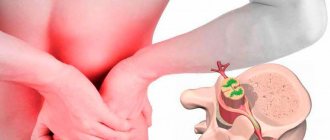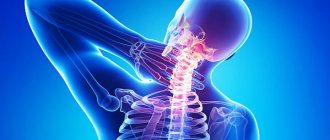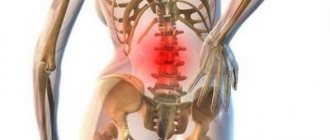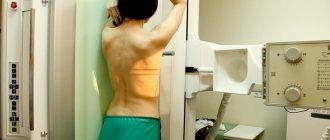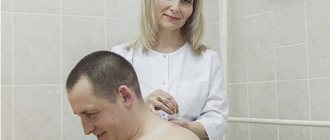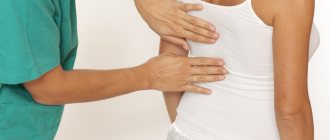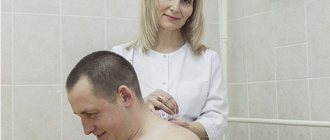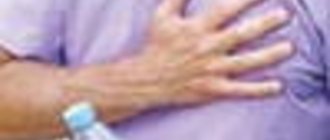Osteochondrosis is a chronic disease that affects the core of the intervertebral disc. In turn, the lesion involves the surrounding tissues of blood vessels and the nervous system. This is the reason for changes in the musculoskeletal system, in bone and muscle tissue.
Young people often ignore the first symptoms of osteochondrosis, which occur en masse at the age of 25 and earlier. This often happens among students whose occupation requires a sedentary lifestyle. Therefore, older people often turn to medical help when they already have chronic osteochondrosis, the treatment of which can be difficult.
Dystrophic phenomena in the spinal column can have a pathological effect on internal organs. Medical practice has confirmed the relationship between the health of internal organs and the spine.
Effective treatment of osteochondrosis
If the diagnosis of osteochondrosis is confirmed, this means that there will be a long procedure for its treatment, despite the frivolous attitude towards this disease that exists in society.
The best treatment for osteochondrosis involves an integrated approach. The course consists of several stages, each of which is aimed at achieving a specific result.
First stage
Pain sensations are eliminated. The doctor may suggest wearing a device that supports the neck and back in the most physiologically correct position. Together, painkillers and physiotherapeutic procedures are prescribed, as well as traditional medicine methods, for example, acupuncture, which is confirmed in official sources and constitutes the range of services of medical health institutions approved by the Ministry of Health.
Second phase
The task is to restore the discs of the spinal column and prevent dystrophic changes.
Treatment involves adjusting the diet, physical therapy, manual therapy, massage, and acupuncture. This complex allows you to improve blood circulation in the intervertebral discs and surrounding tissues.
For neurological symptoms, the neurologist can carry out a novocaine blockade or use more serious drugs to relieve muscle spasms. They may return after a while, but continued work on the joints and tendons restores their healthy functionality.
It is worth noting that at the initial stage, treatment is possible without the use of drugs. It is enough to introduce exercise therapy into the complex of therapeutic measures, reduce heavy physical activity, use Kuznetsov and Lyapko applicators, and physiotherapeutic procedures.
Causes of osteochondrosis
The main reason for the development of this disease is the uneven distribution of load on the intervertebral discs and on the spine as a whole. Such reasons include:
- constant habit of carrying weights in one hand;
- an excessively soft mattress that does not allow the body to be in the correct position while sleeping;
- the pillow is too high, distorting the position of the neck and head;
- constant sedentary work at the computer;
- excess weight and poor diet;
- severe overstrain of the body;
- age-related degenerative processes;
- using the wrong shoes.
All these fairly simple factors can trigger a very serious inflammatory process and lead to the development of osteochondrosis .
Drug therapy
Medicines begin to be used as the disease progresses and when the patient has already advanced osteochondrosis of the back. Treatment with drugs can affect not only the symptoms, but also the causes of the disease and its consequences.
Medicines can solve the following problems:
- pain relief;
- reduction of inflammation and tissue swelling;
- strengthening biologically active processes and blood circulation in affected areas;
- restoration of cartilage tissue;
- return of motor activity to joints;
- elimination of depression from constant pain and worry about one’s own health.
Drugs prescribed by a neurologist for osteochondrosis:
- NSAIDs (non-steroidal anti-inflammatory drugs). They relieve pain and tissue swelling and can be used in the form of injections, ointments and gels, tablets and capsules. Among them: diclofenac (Diclac, Voltaren), meloxicam (Movaxin, Movalis), ibuprofen (Dolgit, Nurofen,) nimesulide (Nise, Nimesil), ketoprofen (Febrofit, Ketonal).
- Vasodilators (vasodilators). Vessels can narrow due to chronic pain syndrome. To ensure normal tone, the doctor prescribes: pentoxifylline (to reduce vascular tone), berlition, actovegin (for better recovery).
- Muscle relaxants (muscle relaxants) and painkillers. Without these drugs, treatment takes longer. Providing a relaxing effect, joint mobility increases, blood flow normalizes, and pain goes away. Drugs from this group: baclofen, mydocalm, miolastane, no-shpa, sirdalud.
- Chondroprotectors (symptomatic drugs with delayed action). They contain easily digestible forms of collagen fibers that can relieve inflammatory processes, slow down and reverse degenerative phenomena in cartilage and bone tissues. The effect of the drugs occurs after long-term use (at least 6 months). Among the drugs in this group: chondroitin (structum, chondroxide), teraflex (vitamins + chondroitin + glucosamine), alflutop (bioactive concentrate of 4 species of marine fish), glucosamine (dona), arthra (glucosamine + chondroitin), trental, actovegin, diacerin, hyaluronic acid.
- Sedatives (calming drugs). They relieve stress and depression due to illness. They are of synthetic and natural origin. These include: validol, corvalol, valocordin, motherwort tincture, valerian; antidepressants (imipramine, fluoxetine, maprotiline), hypnotics (antihistamines, barbiturate and benzodiazepine derivatives).
- Vitamin and mineral complexes. Preference is given to drugs containing vitamin “B”, which can have a restorative effect on the affected nerve areas and relieve pain. The complexes are represented by drugs: neuromultivit (tablets), milgamma (injection solution, tablets). For a general strengthening effect: multivit, complivit, multi-tabs.
Osteochondrosis and massage
Today, when choosing one of the methods for treating osteochondrosis with massage, doctors recommend listening to the prescriptions of the treating neurologist or therapist.
Any type of therapeutic massage is prescribed only in case of remission of the disease. If an exacerbation occurs, it is not recommended to use it so as not to worsen the situation.
Among the types of massage used to treat osteochondrosis there are:
- classical;
- self-massage;
- point;
- Thai;
- segment-reflex;
- vacuum;
- periosteal.
The duration of the procedure is 20-45 minutes. This is enough to achieve a therapeutic effect and the ability to feel relief already in the first sessions.
To achieve a permanent effect, the course duration is 10-15 procedures. Then there is a break of several months, after which the course of therapeutic massage is repeated again, and for as long as necessary at the discretion of the attending physician.
Diagnostics.
Most often, the diagnosis of “osteochondrosis” is made by a neurologist. At the initial examination, the doctor conducts an examination in connection with the patient's complaints of pain or limited mobility of the spine. The patient's spine is examined in standing, sitting and lying positions, in states of rest and movement.
Feeling the spine allows you to supplement the examination data (presence or absence of deformation), determine the location, degree and nature of pain. When palpated, tension in the muscles located next to the spine is noted. The patient is asked to bend or squat to determine the range of motion in various parts.
The final diagnosis is made by a neurologist based on a physical examination, as well as the results of radiography, CT or MRI. With the help of these examinations, the level of damage is determined, the diagnosis is specified, and hidden pathologies are revealed. After diagnosis, the attending physician determines treatment tactics and selects the most effective treatment method.
Osteochondrosis of the third degree, treatment
At this stage, the fibrous ring of connective tissue undergoes destruction. This in turn causes protrusion and herniation of the intervertebral disc. In this case, the painful sensations are not expressed, but persist due to the possibility of pinching the roots of the nerve endings.
It may manifest itself as numbness of the extremities, loss of control over the functions of the pelvic organs, decreased muscle tone, impaired sense of coordination and balance. In reality, the diagnosis of grade 3 osteochondrosis can only be confirmed with the help of radiography, which will show defragmentation (the appearance of cracks) and deformation of the joints of the spine and the formation of osteophytes (bone outgrowths).
Magnetic resonance and computed tomography examinations show hernias and displacements with ruptures of the membrane and pinched nerve endings; these complications often accompany stage 3.
Treatment of spinal osteochondrosis in patients at this stage does not always have a favorable prognosis. Most cannot be completely eliminated from the symptoms of the disease.
The therapeutic effect is achieved through complex therapy of conservative and surgical methods.
Conservative method
It consists of drug treatment, massage treatment, exercise therapy, maintaining a healthy lifestyle (avoiding heavy lifting, sudden turns of the spine, giving up bad habits).
Injection treatment with drugs
Novocaine blockades, facet joint blockades, epidural and paravertebral blockades are performed, and corticosteroid drugs (dexamethasone, prednisolone) are used to relieve inflammation.
When treated with injections, the active substance enters immediately into the perivertebral region, or directly into the vertebra, which ensures a rapid therapeutic effect.
Surgical method
It is often used due to the destruction and displacement of intervertebral discs and consists of the following operations:
- removal of the intervertebral disc, partially or completely;
- connection (osteosynthesis) of adjacent vertebrae to protect the spinal cord;
What medications should be used for cervical osteochondrosis?
There are 5 sections of the spine, but the cervical section is most often affected - it is the most mobile. The most common disease is cervical osteochondrosis. As is the case with other parts, when the spinal column is damaged in the neck area, discomfort first occurs, and then pain. To eliminate symptoms and prevent the development of the disease, medications are prescribed. It is best to administer drugs by injection - this way they enter the blood faster.
Drug treatment for cervical osteochondrosis
Injections are the basis of drug therapy for damage to the spinal column, especially in the acute phase of the disease. To prevent further deformation of the spine, the following is prescribed:
- Vitamins. Vitamins of group B and C are prescribed without fail;
- Nonsteroidal drugs. Their task is to relieve pain and eliminate foci of inflammation;
- Analgesics. This group of medications relieves muscle spasms;
- Chondroprotectors – activate cartilage regeneration.
The drugs are administered in a course. This is due to the fact that the pain returns - treatment is divided into several stages.
Advantages of injecting drugs
There are many methods of therapy for osteochondrosis of the cervical spine, but all doctors agree that injection administration of the drug is highly effective. To understand why this method of treatment is so popular, let’s define its advantages:
- Quick effect on the body to eliminate muscle spasms, inflammation, pain;
- The most accurate dose, especially when installing a dropper;
- The number of side effects is minimal, the drug is completely absorbed by the body - the drug bypasses the liver.
Injection method
For osteochondrosis of the cervical spine, he uses 3 methods of injecting the drug (depending on where and how the injection is given):
- Intramuscular. This option is more popular than others. The therapeutic effect occurs quickly. Among the distinctive features: the method is suitable for most patients (the number of contraindications is minimal);
- Intravenous. The second most popular method. It is used in cases where you need to relieve muscle spasms as quickly as possible and relieve severe pain;
- Subcutaneous, blockade (injection directly into the affected area). This option is the least common. Subcutaneous administration of the drug does not have significant advantages over injection into a muscle or vein. Blockades are rarely carried out due to high demands on the doctor: he must have the appropriate qualifications.
When choosing a particular method, the patient’s condition, the presence of contraindications, the risk of side effects and the effectiveness of a particular drug are taken into account.
Drug Review
As noted earlier, for osteochondrosis of the cervical spine, 4 types of drugs are prescribed. Which one will be injected depends on the doctor’s recommendations. To treat the disease use:
- Alflutop, Mucosat are chondroprotectors. They prevent the destruction of cartilage and activate regenerative processes. They are often prescribed in injection form, as they are highly effective;
- Diclofenac, Ketanol are non-steroidal drugs. They are used to relieve pain and reduce inflammation;
- Piracetam, Phenotopil are nootropics. They are used in combination with Actovegin, Cerebrolysin - drugs that activate cerebral circulation;
- Nicotinic acid and ascorbic acid are vitamins. Their role is to maintain healthy blood vessels, tissues, and cartilage.
Conclusion
Using injection, you can accelerate the therapeutic effect and increase the positive effect of the medicine on the patient’s body.
When choosing a drug and method of administration (under the skin, into a muscle or vein), you should start from 4 groups of medications, the patient’s condition and the nature of the pain. Author: K.M.N., Academician of the Russian Academy of Medical Sciences M.A. Bobyr
Hirudotherapy method
Medicine makes it possible to influence osteochondrosis using many methods. Treatment with leeches helps increase joint activity, and the active substance (hirudin) found in their saliva thins the blood, helps restore and regenerate damaged tissues due to better absorption of nutrients, relieves swelling, pain, pinched nerves, and increases the effect of other conservative methods. The procedure is painless and in one session, which lasts 30-60 minutes, 5-7 specimens of pharmaceutical or medicinal leeches are used.
The course of treatment consists of 8-10 procedures with periods of 5 days between them.
Due to the fact that the vast majority of people have spinal osteochondrosis of varying degrees of severity, and the disease is underestimated in its consequences, it makes sense to contact the clinic as early as possible for medical help from our general specialists and carry out appropriate treatment and preliminary diagnosis of the disease .
osteochondrosis
results
- According to the data obtained, after one year the difference in the sum of the RMDQ scores between the amoxicillin group and the placebo group was −1.6 (95% CI −3.1-0.0, P = 0.04).
- Subgroup analysis also did not reveal clinically significant differences. For patients with Modic 1 changes, the difference was −2.3 (95% CI −4.2 to −0.4, P=0.02), for patients with Modic 1 changes −0.1 (95% CI −2.7-2.6, P=0.95).
- Fifty patients (56%) in the amoxicillin group had at least one adverse event, compared with 31 patients (34%) in the placebo group.
